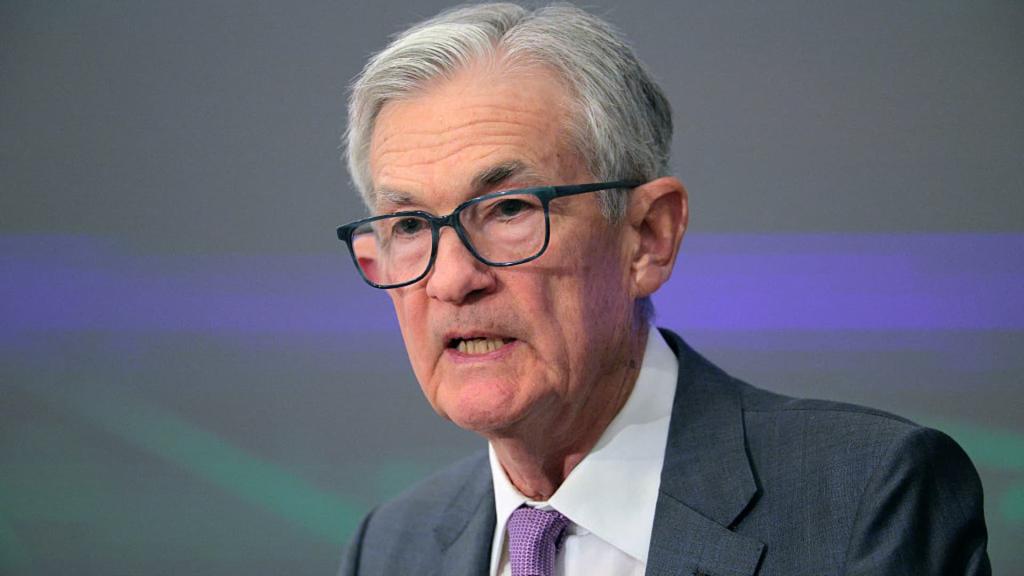This week, Federal Reserve officials will outline their economic projections regarding future interest rate movements and the potential impact of tariffs and ongoing Middle East conflicts on the U.S. economy.
While immediate changes to interest rates appear unlikely, the upcoming policy meeting, set to conclude on Wednesday, holds significant potential to influence market dynamics.
Key points of focus include whether members of the Federal Open Market Committee (FOMC) will maintain their forecast of two interest rate cuts within the year, their perspective on inflation trends, and how Chair Jerome Powell responds to the White House’s escalating calls for looser monetary policy.
Bank of America economist Aditya Bhave noted that “the Fed’s main message at the June meeting will be that it remains comfortably in wait-and-see mode.” The firm anticipates that while the Fed may not implement any cuts this year, it will leave the door open for one potential reduction. Bhave emphasized that investors should pay attention to Powell’s views on the recent softening in labor data, stable inflation rates, and the risks associated with ongoing tariff-induced inflation.
Investors will closely monitor the committee’s “dot plot,” which maps individual members’ interest rate expectations.
During the last forecast update in March, the FOMC indicated the possibility of two quarter-percentage-point cuts this year, aligning with current market expectations. However, two changes in outlook from committee members could shift the median forecast to just one rate cut.
This meeting occurs amid a complex geopolitical landscape, where the influence of President Trump’s tariffs on inflation has remained minimal thus far, yet remains uncertain moving forward. Additionally, administration officials, including Trump, have intensified their pressure on the Fed to lower rates.
Moreover, escalating tensions in the Israel-Iran conflict raise concerns about potential disruptions in global energy markets, adding another variable for policymakers to consider.
Bhave anticipates that Chair Powell will reiterate messages from the May press conference, asserting that the current policy stance is stable and that there is no urgency for the Fed to take action. Nevertheless, he cautioned that circumstances could evolve rapidly.
Economic Indicators in Flux
Despite a low unemployment rate of 4.2%, the May nonfarm payrolls report reflects a steady but gradual softening in the labor market. Recent inflation data suggest that tariffs have had limited effects on overall pricing, providing the Fed with further rationale to consider potential easing measures.
Former Dallas Fed President Robert Kaplan stated in a Finance Newso interview last week, “We’re in a disinflating world. If it weren’t for these prospective tariffs that are either affecting or will affect prices, I believe the Fed would be inclined to cut rates sooner.”
Heading into the meeting, market forecasts indicate that the next interest rate cut could occur in September, which would mark the one-year anniversary of a previously implemented, surprising half-percentage-point reduction amid labor market concerns. The committee subsequently adjusted rates two more times by the year’s end and has maintained its position since then.
David Mericle, an economist at Goldman Sachs, observed that “trade tensions have lessened somewhat, inflation has remained low, and hard data has shown only limited signs of softening.” While Goldman projects the Fed to uphold its two-rate-cut prediction, they expect that ultimately only one reduction will materialize.
“We remain confident that rate cuts are forthcoming because, aside from tariffs, the inflation landscape has generally been subdued. While an earlier cut is conceivable, the full impact of peak summer tariffs on monthly inflation figures will likely deter the FOMC from making a cut before December,” Mericle noted.
Officials are also expected to revise their projections regarding employment, inflation, and gross domestic product (GDP) growth. Goldman forecasts that FOMC will adjust its inflation expectations upward to 3% for the entirety of 2024, marking a 0.2 percentage point increase from March’s estimates. The firm also predicts a slight decrease in GDP growth, from 1.7% to 1.5%, alongside a marginal rise in the unemployment rate to 4.5%.
As summer unfolds, officials will closely monitor economic data developments to guide their future decisions, according to Krishna Guha, head of global policy and central bank strategy at Evercore ISI. “We expect the FOMC to maintain its wait-and-see approach during the June meeting, noting the importance of gathering further insights into the evolving economic outlook in the coming months, while highlighting September as the next critical decision point on interest rates,” Guha remarked.


























